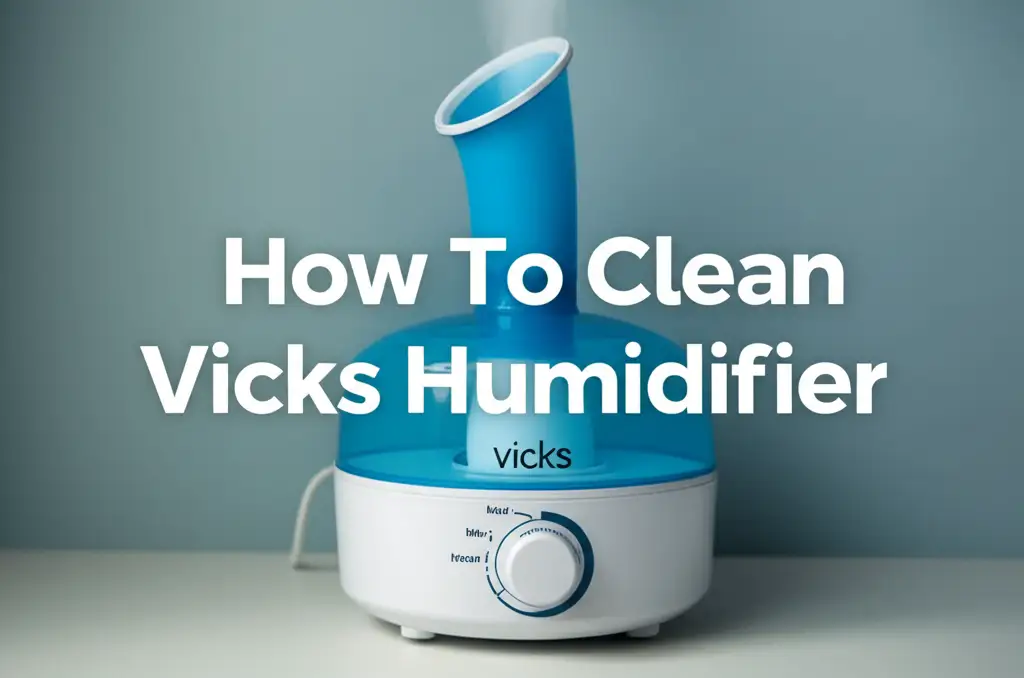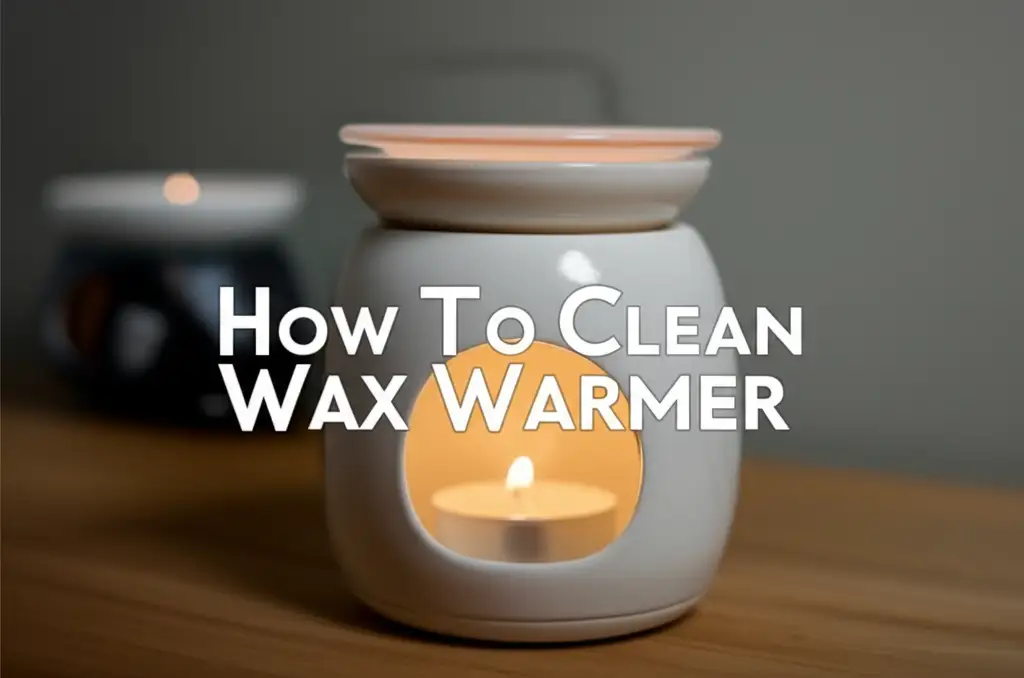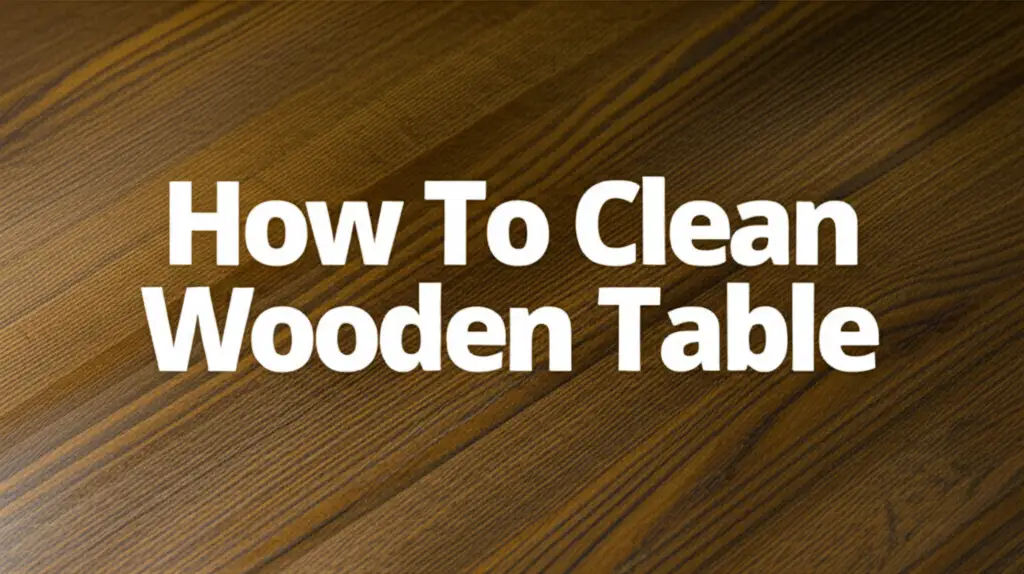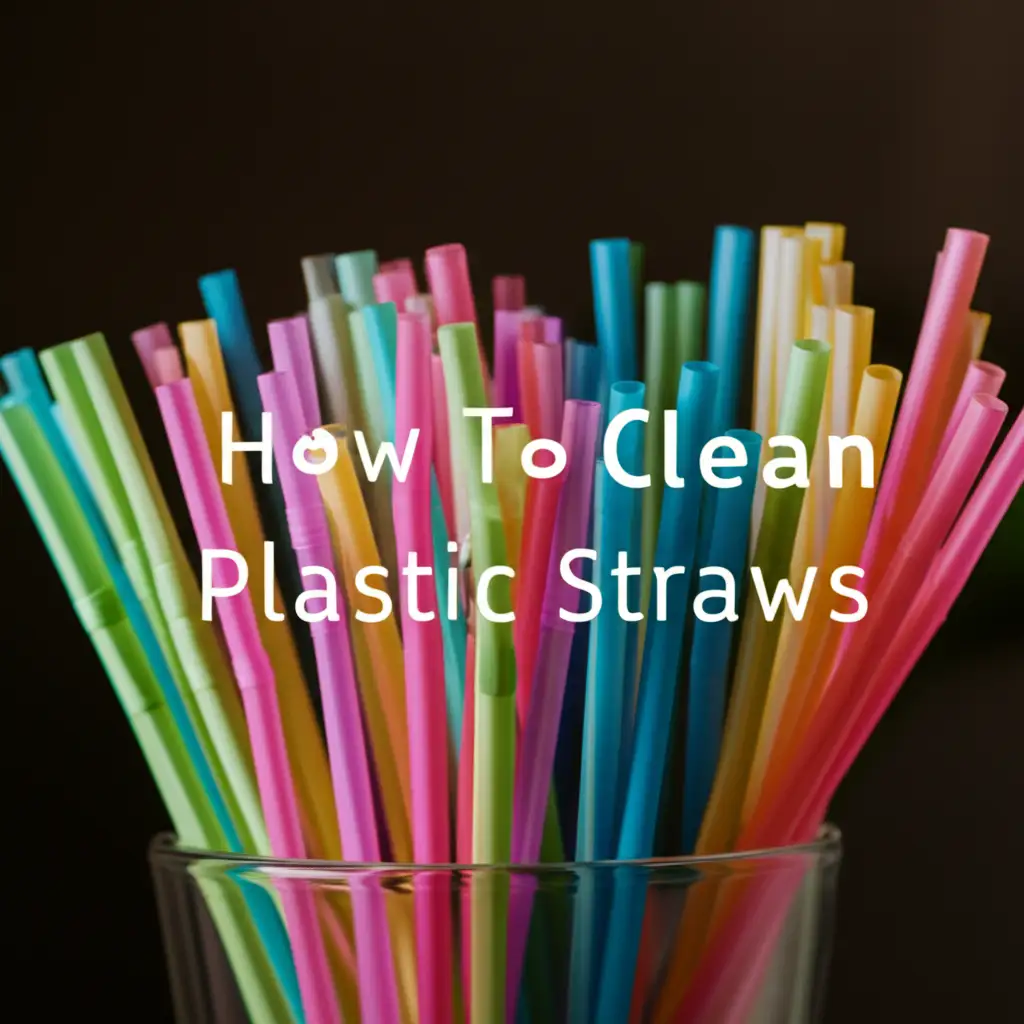· Home Cleaning · 17 min read
How To Clean Lint From Hairbrush
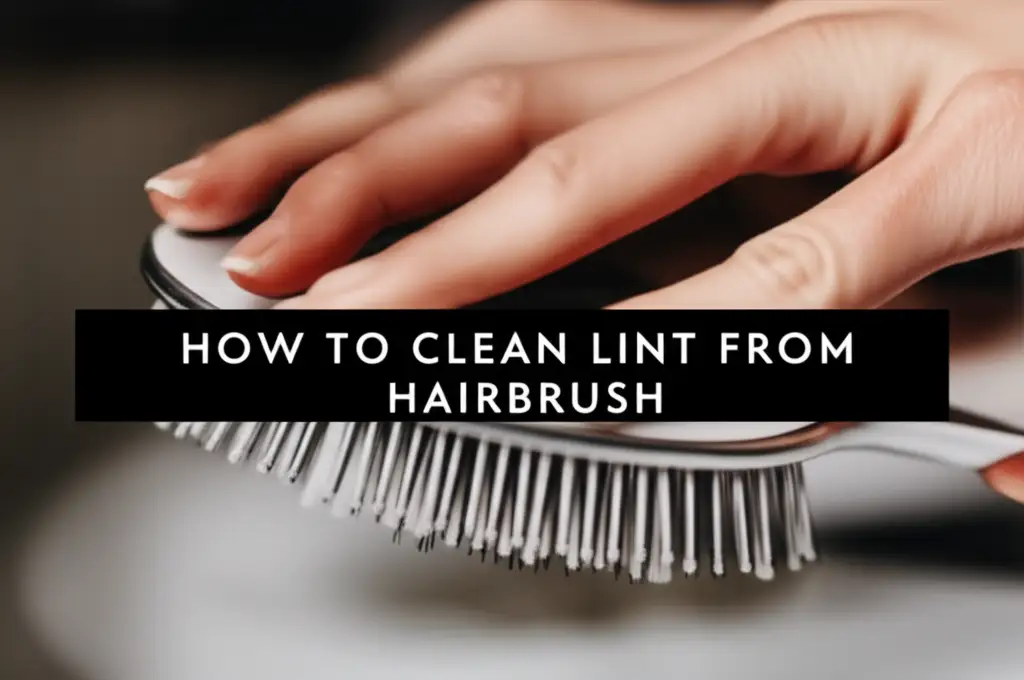
Effortlessly Clean Lint From Your Hairbrush
Have you ever looked closely at your hairbrush? You might find it full of hair, dust, and tiny bits of lint. This build-up happens to everyone. A dirty hairbrush does not work as well as a clean one. Learning how to clean lint from hairbrush items is simple.
I will show you easy ways to make your hairbrush fresh again. This guide covers gathering tools, dry methods, wet cleaning, and care for different brush types. You will also learn how to prevent future lint. A clean brush helps keep your hair healthy.
Takeaway
- Remove loose hair and lint regularly by hand or with a comb.
- Deep clean your hairbrush every 2-4 weeks using warm water and mild soap.
- Handle wooden brushes with care; avoid soaking them to prevent damage.
- Dry your hairbrush completely before using or storing it.
- Clean your hairbrush often to keep hair healthy and prolong brush life.
How to clean lint from your hairbrush: Start by pulling out all visible hair and lint with your fingers or a comb. Then, wash the brush bristles with warm water and mild shampoo or soap to remove oils and product residue. Rinse it well and allow it to air dry completely.
Why Your Hairbrush Needs Regular Cleaning
Your hairbrush works hard every day. It styles your hair and removes loose strands. Over time, hair, dust, and lint collect in the bristles. This creates a messy, matted layer.
Lint is not just unsightly; it can affect your hair. It consists of dust, dead skin cells, and product residue. This mixture builds up on your brush. Using a dirty brush can transfer these things back to your clean hair. This makes your hair look dull or feel greasy faster.
A clean hairbrush works better. Its bristles can detangle hair properly. They distribute natural oils from your scalp. A brush full of lint cannot do this job well. The bristles become less effective. They might even pull at your hair more.
Think about the products you use. Hairspray, dry shampoo, and styling creams leave residue. This residue sticks to the brush bristles. It combines with hair and lint, making a sticky mess. Regular cleaning removes this buildup. It keeps your brush performing at its best. It also helps your hair stay cleaner longer. Clean brushes are essential for good hair care.
Maintaining a clean hairbrush helps with hygiene. Germs can grow in a dirty, damp environment. This is especially true if you share brushes. Cleaning reduces the spread of bacteria. It keeps your scalp healthier. A clean brush feels good to use too. It is a small step with a big impact.
Gather Your Simple Cleaning Tools
Before you start, collect everything you need. Most items are already in your home. Having them ready makes the cleaning process smooth. This preparation saves you time. You will not have to stop mid-task.
First, you need a pair of scissors. Small craft scissors work well. Nail scissors are also good. You use them to cut tangled hair strands. Sometimes hair wraps tightly around the bristles. Scissors help free these knots. Make sure they are clean and sharp.
Next, find a fine-tooth comb. A rat-tail comb with a pointed end is perfect. This comb helps pull out hair and lint. It slides between the bristles easily. You can also use a special hairbrush cleaning tool. These tools often have a small rake or hook. They are designed for this specific job. If you do not have one, a regular comb is fine.
You will also need warm water. A sink or a basin works for this. The water helps loosen dirt. It prepares the brush for a deeper clean. Lukewarm water is best for most brushes. Hot water can damage some plastics or glues.
Mild soap or shampoo is important. A gentle shampoo works well for hairbrushes. You can also use dish soap. Dish soap cuts through grease and product buildup. Use just a small amount. Too much soap creates excessive suds. This makes rinsing harder.
Finally, gather a soft cloth or an old toothbrush. The cloth helps wipe the brush clean. An old toothbrush is great for scrubbing. Its bristles reach deep into your brush’s base. It removes stubborn grime. Make sure the toothbrush is clean. Using the right tools makes cleaning easy.
Step-by-Step Guide to Dry Lint Removal
Removing lint dry is your first step. This method takes out most of the loose hair and dust. It prepares your brush for a deeper clean. You should do this dry cleaning often.
Start by holding your hairbrush. Use your fingers to pull out large clumps of hair. This is usually the easiest part. The hair often comes out in one big mass. Discard this hair right away. Do not let it fall back onto the brush.
Next, use your fine-tooth comb or a hairbrush cleaning tool. Slide the comb’s teeth into the brush bristles. Start from one edge of the brush. Move the comb from the base of the bristles out to the tips. This action pulls trapped lint and shorter hairs. Repeat this across the entire brush. Work in small sections. You will see more lint come out.
For very tangled hair, use your scissors. Carefully cut through the hair tangled at the base of the bristles. Be very gentle. Do not cut the bristles themselves. Cut along the base of the bristles. This breaks up the hair strands. It makes them easier to pull out. Once cut, use your comb again. Pull the loosened hair out. This step needs patience. Take your time to avoid damage.
Sometimes lint gets matted deep in the brush. You can try a pen or the pointed end of a rat-tail comb. Gently lift the matted lint away from the brush base. Then, grab it with your fingers or tweezers. This helps get out stubborn bits. Lint often hides under the bristles. Make sure you check all areas.
After removing the majority of hair and lint, tap the brush. Tap it against a hard surface. This loosens any remaining dust. You might see a fine cloud of dust come off. This dry method is fast and effective. It makes your brush look much better quickly. Do this weekly to keep your brush clean.
Deep Cleaning Your Hairbrush: The Wet Method
After dry cleaning, it is time for a wet wash. This step removes product buildup, oils, and fine dust. It sanitizes your brush. This deep cleaning makes your hairbrush truly fresh. Do this every few weeks.
First, fill a basin or a sink with warm water. Add a few drops of mild shampoo or dish soap. Swirl the water to create suds. You do not need a lot of soap. A little goes a long way. This soapy water will break down grime.
Submerge your plastic or metal hairbrush into the soapy water. Let it soak for 10-15 minutes. This softens any remaining residue. It loosens stubborn lint. The water should cover the bristles. Soaking helps clean deep into the brush’s base. If your brush has a wooden handle or base, do not soak it fully. I will discuss wooden brushes in the next section. For general cleaning of tough grime, you can think about how you might clean a shower base, where stubborn buildup needs soaking and scrubbing. You can find more tips on cleaning stubborn buildup at how to clean bottom of shower.
After soaking, use an old toothbrush. Gently scrub between the bristles. Focus on the base of the brush. This is where most product and lint build up. The toothbrush bristles can reach small spaces. Work in small sections. Scrub all sides of the brush head. You will see foam turn murky. This shows it is working. Rinse the toothbrush often.
Once scrubbed, rinse your hairbrush thoroughly under cool, running water. Make sure all the soap is gone. Soap residue can make your hair dull. Hold the brush bristles down. This allows water to run through. It prevents water from collecting in the cushion. Keep rinsing until the water runs clear. A good rinse is important for any cleaning task, similar to how you would rinse a dishwasher filter. For more insights on proper rinsing, consider tips for how to clean filter in dishwasher.
Finally, dry your hairbrush properly. Shake off excess water. Place it on a clean towel with the bristles facing down. This allows air to circulate. It helps the water drain away. Let it air dry completely. This might take several hours. Do not use a wet brush. A damp brush can grow mildew. Ensure it is completely dry before storage or use. This deep cleaning makes a big difference.
Special Considerations for Different Hairbrush Types
Not all hairbrushes are the same. Different materials need different cleaning methods. Knowing your brush type helps prevent damage. This ensures your brush lasts longer. Pay attention to the handle and base.
Plastic Hairbrushes: These are the easiest to clean. They are durable. You can submerge plastic brushes completely in water. They stand up well to scrubbing. Most of the wet cleaning steps apply perfectly here. Just make sure to dry them well. They can hold water in their base.
Wooden Hairbrushes: Wooden brushes need special care. Wood can warp or crack if soaked. It can also absorb water and grow mildew. Do not submerge a wooden hairbrush. Instead, use a damp cloth to wipe the handle. For the bristles, use a small amount of soapy water on your toothbrush. Scrub the bristles carefully. Avoid getting the wooden base too wet. If you get stains on the wood, addressing them quickly can prevent permanent damage. You might find useful information on cleaning wood surfaces at how to clean stains on wood. Rinse only the bristles under running water. Hold the brush with bristles pointing down. Dry it immediately with a towel. Then, let it air dry completely, bristles down.
Natural Bristle Hairbrushes (Boar, Nylon/Boar Mix): These brushes are common. Natural bristles are delicate. They can become brittle if exposed to harsh chemicals. Always use a mild shampoo for these. Avoid very hot water. It can damage the bristles. The cleaning process is similar to plastic brushes, but be gentler. Rinse thoroughly to remove all soap. The natural bristles absorb more water. This means they need more drying time. Lay them flat on a towel. Ensure good air circulation.
Paddlebrushes and Cushion Brushes: These brushes often have a soft cushion base. Water can get trapped inside the cushion. This leads to mold or mildew. When cleaning, avoid pushing water into the air hole. This small hole allows air flow. It balances pressure when brushing. Hold the brush so bristles point down when rinsing. This helps water drain out. Squeeze the cushion gently after rinsing. This pushes out trapped water. Dry them bristles-down on a towel. They may take longer to dry.
Metal or Ceramic Brushes: These are usually round brushes. They have a metal or ceramic barrel. These materials conduct heat. They are easy to clean. You can wash them with soap and water. They dry quickly. Just ensure no water gets inside the hollow barrel. These brushes are robust. They tolerate regular washing well. Always check manufacturer instructions if unsure.
Preventing Lint Buildup in Your Hairbrush
Cleaning your hairbrush is important. Preventing lint buildup is even better. Regular habits save you time. They keep your brush cleaner for longer. These simple steps make a big difference.
First, remove loose hair after every use. This is the most effective prevention step. When you finish brushing, take a moment. Use your fingers to pull out any hair tangled in the bristles. This stops hair from getting pushed deeper into the brush. It also prevents hair from forming matted clumps. Hair acts like a net. It traps dust and lint. Removing it immediately breaks this cycle. This quick action takes only a few seconds.
Store your hairbrush properly. Do not leave it on dusty surfaces. Keep it in a drawer or a clean holder. An open brush can collect dust from the air. This dust combines with stray hairs. It forms new lint. If you have a vanity, consider a closed container. This protects your brush from airborne particles. A clean storage spot helps maintain cleanliness.
Clean your brush frequently. A quick dry clean once a week is good. This removes any minor buildup. It prevents small amounts of lint from becoming a big problem. You can use your comb for this. Just a few passes can remove dust. This light maintenance is key. It reduces the need for heavy duty cleaning.
Consider changing your brushing technique. Brush your hair when it is dry. Wet hair is more fragile. It breaks more easily. These broken pieces of hair can get stuck in your brush. They add to the lint. Brushing gently also helps. Aggressive brushing can pull out more hair. This hair then becomes part of the brush lint. A gentler touch helps your hair and your brush.
Regularly clean your hair. This might seem odd for brush cleaning. But, if your hair is shedding less, less hair goes into the brush. Healthy hair sheds less than damaged hair. Use good hair products. Keep your scalp healthy. Less hair in the brush means less lint. These preventive measures extend the life of your brush. They also contribute to healthier hair.
Common Mistakes to Avoid When Cleaning Your Hairbrush
Cleaning a hairbrush seems straightforward. However, some common mistakes can damage your brush. Avoiding these errors ensures your brush stays in good condition. You will also get better cleaning results.
One major mistake is soaking wooden brushes. Wood absorbs water. This causes it to swell, warp, or crack. The glue holding the bristles might also weaken. This can make bristles fall out. Always remember: wooden brushes should never be submerged. Use a damp cloth for the handle. Target the bristles directly with minimal water.
Another error is using harsh chemicals. Bleach, strong detergents, or abrasive cleaners can harm brush materials. They can discolor plastic. They can make natural bristles brittle. Harsh chemicals might also leave residues. These residues can transfer to your hair. Stick to mild soap or shampoo. These are gentle yet effective. They clean without damage.
Not drying your hairbrush completely is a big mistake. A damp brush is a breeding ground for mildew and bacteria. This leads to unpleasant smells. It can also be unhygienic. Always let your brush air dry fully. Place it bristles-down on a towel. Ensure good air circulation. Patience here prevents mold.
Using the wrong tools for stubborn tangles can cause damage. Trying to yank out matted hair with force can bend or break bristles. It can also pull them out from the base. Always use scissors to cut through tough knots. Then, gently comb out the pieces. This protects the integrity of your brush. It preserves its function.
Ignoring the brush base is another common oversight. Lint, dust, and product often collect deepest at the base of the bristles. If you only clean the surface, you leave a lot of grime behind. Use an old toothbrush to scrub thoroughly at the base. This ensures a complete clean. It gets rid of hidden buildup.
Cleaning too infrequently is also a mistake. If you wait too long, the buildup becomes very hard to remove. Lint mats tightly. Product residue hardens. This requires more effort to clean. It might even be impossible to get the brush perfectly clean again. Regular light cleaning prevents heavy buildup. It keeps your brush performing its best. Avoid these common pitfalls. Your hairbrush will thank you.
Maximizing Your Hairbrush Lifespan
Proper cleaning does more than just make your hairbrush look good. It also helps your brush last longer. A well-maintained hairbrush is a smart investment. You get the most value from your tools. Let me share how to maximize its lifespan.
Think about the quality of your brush. A good quality brush is worth the effort to clean. Cheap brushes might break easily. They might not clean well. Investing in a durable brush means it will stand up to regular cleaning. It performs better over time. Look for sturdy materials.
Store your brush correctly. Avoid leaving it in damp places. Bathrooms can be humid. Humidity encourages mildew. Store your brush in a dry, airy spot. If you travel, use a brush cover. This protects bristles from bending. It also keeps dirt away. Proper storage prevents premature wear.
Avoid using your hairbrush for purposes it was not made for. Do not use it to stir things. Do not use it to clean other items. These actions can damage the bristles. They can scratch the handle. Stick to using it for hair only. This simple rule extends its life.
Be gentle when brushing. Pulling harshly can bend or break bristles. It can also loosen them from the base. Start detangling from the ends of your hair. Work your way up. This reduces strain on the brush. It also reduces strain on your hair. Gentle handling makes your brush last.
If bristles become bent, try to straighten them. For plastic bristles, you can sometimes carefully bend them back. Use your fingers. Do this gently to avoid snapping them. For natural bristles, avoid bending them. Prevention is better here.
Regular cleaning prevents small problems from becoming big ones. Lint buildup stresses the bristles. It makes them spread apart. This reduces their effectiveness. Cleaning removes this stress. It maintains the original shape and function of the bristles. A well-cared-for brush performs reliably. It saves you money in the long run. You will not need to replace it as often.
FAQ Section
How often should I clean my hairbrush?
You should remove loose hair daily or after every use. Perform a dry cleaning (using a comb) weekly. Deep clean your hairbrush with soap and water every 2-4 weeks. This schedule keeps it hygienic and effective. Adjust frequency based on how much product you use.
Can I use shampoo to clean my hairbrush?
Yes, mild shampoo is an excellent choice for cleaning your hairbrush. It is designed to break down hair oils and product residue gently. You can also use a small amount of mild dish soap. Avoid harsh detergents or chemicals as they can damage the brush bristles.
Is it okay to soak a wooden hairbrush?
No, you should never soak a wooden hairbrush. Soaking can cause the wood to warp, crack, or swell. It can also weaken the glue that holds the bristles in place. For wooden brushes, focus on cleaning the bristles with a damp, soapy cloth or toothbrush, then dry immediately.
What is the white lint in my hairbrush?
The white lint in your hairbrush is a mix of things. It is mostly dust, dead skin cells, hair product residue, and tiny fibers from clothes or towels. These particles get trapped in the bristles along with shed hair. This combination forms the visible lint.
How do I dry my hairbrush properly after cleaning?
After cleaning, shake off excess water from your hairbrush. Place it on a clean towel with the bristles facing down. This position allows water to drain away naturally. Ensure good air circulation around the brush. Let it air dry completely before using or storing it to prevent mildew.
Can a dirty hairbrush cause hair problems?
Yes, a dirty hairbrush can contribute to hair problems. It can transfer old product, oils, dust, and bacteria back to your clean hair. This can make your hair look greasy, dull, or even lead to scalp irritation. Regular cleaning promotes healthier hair and scalp.
Conclusion
Cleaning lint from your hairbrush is a simple task. It offers many benefits. You learned about gathering tools and using dry methods. You also discovered effective wet cleaning techniques. We covered special care for different brush types. Remember to prevent lint buildup with regular habits. You now understand common mistakes to avoid. This keeps your hairbrush working its best.
A clean hairbrush is vital for healthy hair. It performs better, lasts longer, and improves your overall hygiene. Make hairbrush cleaning a regular part of your beauty routine. Your hair will look and feel better. Take action today. Give your hairbrush the clean it deserves.
- hairbrush cleaning
- lint removal
- beauty tool care
- hair hygiene
- cleaning tips

